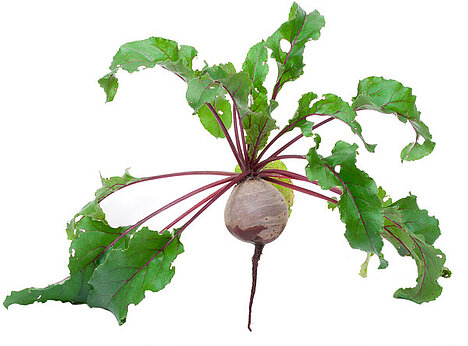Beet fibers

Beet fiber is a common ingredient in dog food, but what is it and how does it affect your dog's health? In this article, you'll find out what beet fiber is, what its benefits and drawbacks are and what you should look out for when feeding it.
What is beet fiber?
Beet fiber is a by-product of sugar production from sugar beet. The sugar beet is crushed, boiled and pressed to extract the sugar. The remaining fibers are called beet fibers. They are almost free of sugar and consist mainly of cellulose, hemicelluloses and pectins. These substances are part of the dietary fiber or crude fiber, which is important for your dog's digestion.
What are the benefits of beet fiber?
Beet fiber has several positive effects on your dog's digestion:
- They bind water in the intestines and thus increase the volume of feces. This stimulates intestinal movement and promotes the elimination of undigested food residues and harmful substances.
- They serve as food for the beneficial bacteria in the large intestine, the so-called intestinal flora. These bacteria produce short-chain fatty acids that lower the pH value in the intestine and thus inhibit the growth of harmful bacteria.
- They indirectly support your dog's immune system, as a large proportion of the immune cells are located in the intestine and benefit from healthy intestinal flora.
What are the disadvantages of beet fiber?
Beet fiber is not only good for your dog, but can also have some disadvantages:
- It can lead to bloating if your dog isn't used to it or eats too much of it. This is because the bacteria in the gut produce gases when they break down the beet fiber.
- They can affect the digestibility and utilization of other nutrients in the food if the crude fibre content is too high. This means that your dog can absorb less energy, protein, fat, vitamins and minerals from his food.
- They can lead to diarrhea if your dog has an intolerance or allergy to beet fiber. This is rare, but possible.
What should you look out for when feeding your dog?
To give your dog the benefits of beet fiber without risking the disadvantages, you should pay attention to a few points:
- Pay attention to the quality of the food. Not all beet fiber is the same. There are different levels of quality depending on how much the sugar beet has been processed. The higher the quality, the less residual sugar and harmful substances the beet fiber contains.
- Pay attention to the amount of beet fiber in the food. The optimum amount of crude fiber for dogs is around 2 to 5 percent of the dry food. Too little can lead to constipation, too much can lead to flatulence or diarrhea.
- Slowly introduce your dog to beet fiber. When changing food or supplementing beet fiber, do so gradually so as not to overwhelm your dog's intestines. Start with a small amount and increase it over several days or weeks.
- Observe your dog. Every dog reacts differently to beet fiber. Some tolerate it well, some don't. Watch for signs of discomfort, such as bloating, diarrhea, vomiting or loss of appetite. If you notice such symptoms, reduce the amount of beet fiber or consult a veterinarian.
Beet fiber is a natural and beneficial ingredient in dog food that can aid your dog's digestion and intestinal health. However, you should make sure that you don't feed your dog too much or too little of it and that he tolerates it well. If you keep these points in mind, you can give your dog the benefits of beet fiber without risking the disadvantages.
If you notice any signs of hypersensitivity or poisoning in your dog, you should see your vet immediately. We are not a substitute for a vet, but we try to be as accurate as possible. Every dog reacts differently and we recommend you get a second opinion or consult your vet if in doubt.
Stay healthy and take good care of your four-legged friend!😊